#classic monsters can be used to explore the liberation of women within the genre
Explore tagged Tumblr posts
Text
it's finally happening (i am writing an essay about the feminist message of Monsters vs Aliens)
Unfortunately, for such a large grade the actual assignment in only meant to be a few paragraphs long (i thought this was like a 5 page essay when i picked the movie but i'm not changing it so I guess I'll just have to be brief for now)
#monsters vs aliens#i was so prepared for that 5 page essay too#i have a doc set up for APA style and everything#but long story short#fuck Derek and your mediocre insidious ways#I See You#and I see this movie in how its entire premise is challenging the way misogyny shaped classic horror tropes and how the very existence of i#classic monsters can be used to explore the liberation of women within the genre#and bring up other outcasts with them in the process#the monsters in this movie do nothing but build Suzan up while the humans are either actively making her small (pun incredibly intended)#(part of the metaphor of ginormica)#or are well-meaning but ignorantly complicit in it#i love this movie
8 notes
·
View notes
Text
Book Review

Cruel Beauty by Rosamund Hodge. Balzer and Bray. 2014.
Rating: 3/5 stars
Genre: YA fantasy
Part of a Series? Yes. Fairy Tales #1 of 3 (so far). But it doesn’t seem like the series is one narrative.
Summary: Since birth, Nyx has been betrothed to the evil ruler of her kingdom-all because of a foolish bargain struck by her father. And since birth, she has been in training to kill him. With no choice but to fulfill her duty, Nyx resents her family for never trying to save her and hates herself for wanting to escape her fate. Still, on her seventeenth birthday, Nyx abandons everything she's ever known to marry the all-powerful, immortal Ignifex. Her plan? Seduce him, destroy his enchanted castle, and break the nine-hundred-year-old curse he put on her people. But Ignifex is not at all what Nyx expected. The strangely charming lord beguiles her, and his castle—a shifting maze of magical rooms—enthralls her. As Nyx searches for a way to free her homeland by uncovering Ignifex's secrets, she finds herself unwillingly drawn to him. Even if she could bring herself to love her sworn enemy, how can she refuse her duty to kill him? With time running out, Nyx must decide what is more important: the future of her kingdom, or the man she was never supposed to love.
***Full review under the cut.***
Trigger Warnings: forced marriage, child neglect, violence, madness; allusions to: tyranny, rape, murder
Overview: To be honest, this book came somewhat of a surprise to me. I wouldn’t have picked it up if a friend hadn’t recommended it, since the summary makes it look like a run-of-the-mill YA fantasy. In some ways, it does make use of tropes that are somewhat cliche by now; however, I think it also deals with ideas that are more interesting than the summary or many of the reviews give it credit for. Though there were some things that irritated me, such as the main character’s inner voice, the worldbuilding intrigued me enough to want to keep reading, and the focus on allowing the main character to embrace her anger was refreshing. Overall, I do think it made use of interesting ideas and had potential to be so much more, which is why I’m rating it 3 stars.
Writing: This book uses a first person point of view, which isn’t my cup of tea. Personal preference aside, I think Hodge did a good job balancing descriptions of her fantasy world and the main character’s inner voice, inserting some nice imagery here and there that really made for some vivid scenery and dark fantasy mood. Sometimes, the prose could border on the dramatic, especially when describing the main character’s inner thoughts or emotions, but it worked out well and fit with the overall mood and circumstances of the narrative.
Plot: This book is a "Beauty and the Beast” retelling that mainly follows Nyx, a 17 year old girl who has been betrothed to a demon lord named Ignifex in the hopes that she can destroy him and thus free her kingdom from his tyranny. It’s pretty straight-forward. I wasn’t very enthralled by this plotline, especially since the buildup consisted of exploring a house and Nyx kind of just reacting to what she found. I wish a little more purpose had gone into the rooms, so that they fit together to explore Nyx’s psyche or comment upon the major themes of the book - anger and hatred as part of a person, the role of duty, or the connection to one’s family.
I did, however, like the ending and thought it was quite clever. Without spoiling anything, I will say that it was a neat exploration of the darkness within a person, and I think the setup could have really brought out this consideration of human nature.
Characters: The main characters in this book include Nyx, Ignifex, and a shadow creature called Shade (who is something of a servant to Ignifex). Nyx, our narrator, is sympathetic in that she has been married against her will, but after a few chapters, I disliked being stuck in her head. She seemed to have no joy whatsoever in her life and was incredibly self-loathing, which, though understandable, was also quite irritating. I also didn’t quite think there was enough to her character to warrant her being especially equipped to take on this challenge. Nyx has very little agency (she never finds a single heart room - the things she needs to enact her plan - by herself) and I couldn’t quite believe that she was the first girl in 900 years to survive looking at demons (why? she just does) or think of stealing keys. I did like, however, that her arc seemed to be about embracing her anger; too often, women are told not to be angry, and giving her the space to feel her feeling was well-done. If the rooms had been more about developing that idea, I think I could have seen her as more of a heroine.
Ignifex, a demon lord, was less interesting to me because he seemed to fit the mold of that arrogant-hot-guy-who-is-actually-a-misunderstood-monster archetype. He’s strict without being a complete asshole (he doesn’t force Nyx to have sex with him, and gives her a lot of freedom to explore his “castle”), so I was inwardly groaning every time he appeared because he was another “beast” who is really just a conventionally attractive guy with a tragic past.
Shade, a “servant” made of shadow, was immediately likable because he was kind. I love characters who are low on the social ladder but intent on sticking it to the man and doing the right thing at great risk to themselves. Initially, his relationship with Nyx was rather sweet, and I very much enjoyed the interactions between the two.
The supporting characters are not very involved throughout most of the story, appearing mainly at the beginning and the end. Nyx’s family seemed altogether horrid, favoring her twin sister over her because Nyx was chosen to be the offering to the demon lord. I could understand her resentment, but I do wish there was more complexity in how she thought of them.
Nyx’s twin sister, Astraia, was naive but sweet, and although I was irritated that Nyx was so cold to her at first, I ended up enjoying that Astraia became central to Nyx’s motivations and emotional development throughout the book. I think sisters are positioned to hate each other in many fairy tales and their retellings, so seeing them connect was wonderful.
Other: Maybe this is personal preference, but I find marriage plots involving teens or young adults a bit off-putting, especially when the marriage is between a teenage girl and an immortal creature. I think I could have dealt with it fine if the marriage was just about fulfilling a bargain, but there were some scenes where Nyx was instructed to please her husband sexually, where she talks about her breasts and what revealing outfit she was wearing, how she might seduce the demon lord, where the fear of being raped is vocalized, etc. I understand that sexuality is a part of teenagers’ lives, and I’m not against depicting it in books. In this context, however, it didn’t quite sit right with me.
Speaking of the romance, I did enjoy the banter between Nyx and Ingifex, but I hated that there was a kind of love triangle with Shade. Nyx bounces back and forth between the two, and though it makes sense by the end, I loathed the moments when Nyx was basically like “Ignifex killed a bunch of people and ruined my life but he’s so hot and it’s arousing when I kiss him, so I think I like him.” This happens a lot in YA/New Adult, and I’ve never understood it. I did like, however, that the two love interests seemed to like different aspects of her. Shade treated Nyx as a hero who would save everyone, giving her confidence in herself; Ignifex allowed her to be herself and liked the darkest parts of her, which was liberating. So, in that regard, there was something interesting going on, but I’m just personally fed up with love triangles.
The major redeeming aspect of this book for me was the worldbuilding. The novel takes place in something of an alternate universe in which Greco-Roman culture and religion has continued for a few hundred more years, the gods and all immortal creatures are real, and magic is practiced and studied like a science. I loved the allusions to classical mythology, poetry, and philosophy, as well as the imaginative work that went into thinking about how a world might look if Greco-Roman society continued.
Recommendations: I would recommend this book if you’re interested in fairy tale retellings (especially Beauty and the Beast), Greco-Roman mythology and culture, demons, curses, trickster gods and bargaining, and supernatural houses/castles.
3 notes
·
View notes
Text
COMPARING VIDEO GAMES AND SURREALISM: CHAMPIONS OF ABSURDISM AND EXPLORES THE HUMAN CONDITION.
I originally wanted to base my essay on the ongoing debate about whether or not video games should be considered fine art worthy of being placed and revered in art galleries. Film critic Roger Ebert strongly opposes the notion that games should be considered art he said “Video games represent a loss of those precious hours we have available to make ourselves more cultured, civilized and empathetic”.

I find this to be totally untrue, I looked at games such as Journey, which depicts a moving and emotional pilgrimage across the desert with themes of sorrow, religion, death and rebirth. I honestly view this game as a modern day painting that could easily resemble a great renaissance painting. The only difference is the level of interactivity. Technology has taken us to the point of being about to directly respond and participate in art. Video games have become a medium that is vastly becoming an intense creative expression and diverse way to spread a message.
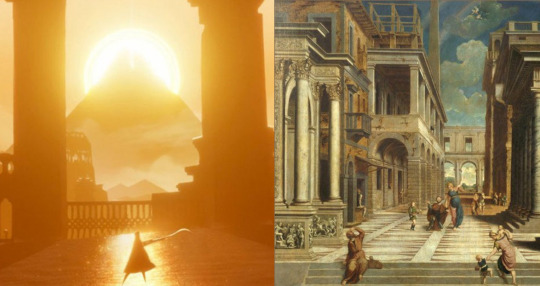
Games developer, Ryan Green, has developed That Dragon, Cancer, a game about how he and his wife are coping with the terminal illness of their youngest son. This game is his medium of expression and his way of coping. It’s as Keith Stuart, the Guardians game editor has said “games are an expressive medium. They are a form of communication… video games are now a language and language is a tool of expression and change”.

So I originally started this essay with the intention of seeing how technology and art are slowly becoming intertwined by games such as ‘Journey’ and ‘That Dragon, Cancer’. However the more I looked into the subject I was less interested in the definition of art or the technology surrounding the games. I was interested in what the games themselves were depicting. The more I looked for games that were not just aesthetically pleasing but said something deep and powerful I realised a running theme.
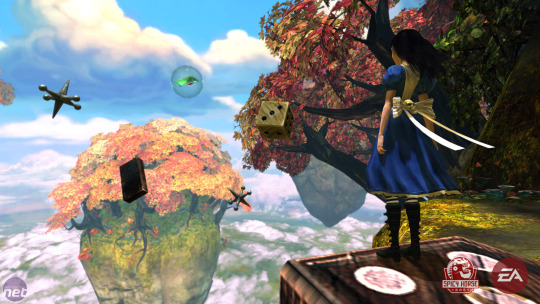
A lot of games that were striving to be something more than a pastime were looking deep into psychology and trying to explain hidden things about the human condition. Take American McGee’s ‘Alice’ series for example. You play as Alice from Victorian London who lost her family in a fire and been forced into prostitution. She has gone mad as a result and falls in and out of Wonderland trying to regain her memories of what really happened. There are stunning landscapes and all the wonderland characters are surreal manifestations of the awful people she knows from reality. The whole game uses wonderland as an allegory of her mind and when it starts to crumble you as Alice have to defend it.

Similar themes are depicted in indie game ‘Fran Bow’ where you play as a little girl trying to fight the demons in her mind. Gaming has become quite a popular medium on which to explore mental health, as you become so invested in the protagonists you almost can experience trauma and psychosis first hand.
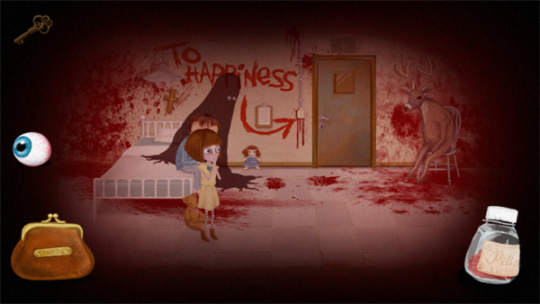
Games more and more are dealing with things like PTSD and schizophrenia such as Special Ops or Hellblade: Senua’s Sacrifice. Bioshock Infinite has been praised for tackling themes like religious and political corruption, racism and xenophobia.
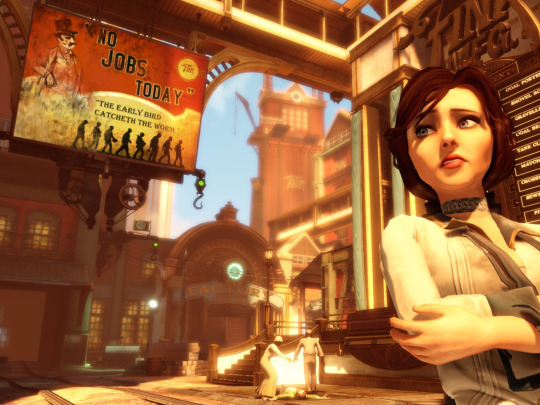
When trying to contextualise these games as works of art I found myself repeatedly going back to the surrealists. They were some of the first to try and depict the human condition outside of strict religious paradigms or with false rationality. They shed restrictive customs and structures to make something new. Which is how I feel video games have shed light on a new way to experience art, it’s shed the restrictive skin of being something as static as a painting or linear as a film. There’s room for a new experimental movement that hasn’t been all that prevalent in post-modernist art for the past few of decades.
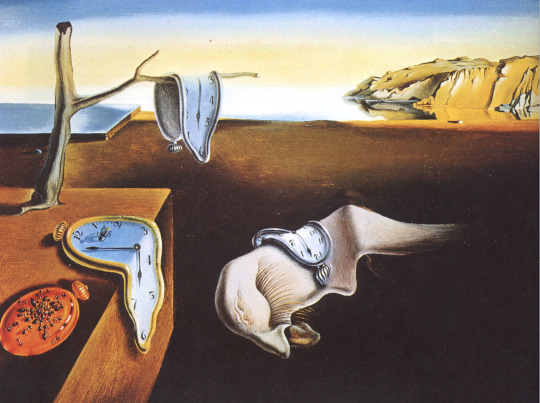
The surrealists strived to ‘Revolutionise the Human Experience’ and create a new way of creating, they created the autonomous style. A technique of writing or drawing straight from your subconscious such as Andre Masson’s “Battle of the Fishes”. He rapidly sketched and applied paint directly from the tube. The image that emerged suggests a savage underwater battle between sharp–toothed fish. Masson, was physically and spiritually wounded during World War I, joined the Surrealist group in 1924. He believed that, if left to chance, pictorial compositions would reveal the sadism of all living creatures. Just like games were Ryan Green’s expression and coping mechanism surrealism and autonomous drawings were Massons.

Sadism and war is a common theme in surrealism due to Surrealism and the Dada movement being a direct political pushback against Western Ideals after the First World War. Artists like Max Ernst, a traumatised soldier created many works trying to deal with his experience of war and such created paints of strange creatures to represent his feelings on the political climate. Such as the Fireside Angel. He was motivated to paint the work after Franco's fascists defeated the Republicans in the Spanish Civil War. Ernst strove to create a painting suggestive of the ensuing chaos he feared was spreading across Europe.
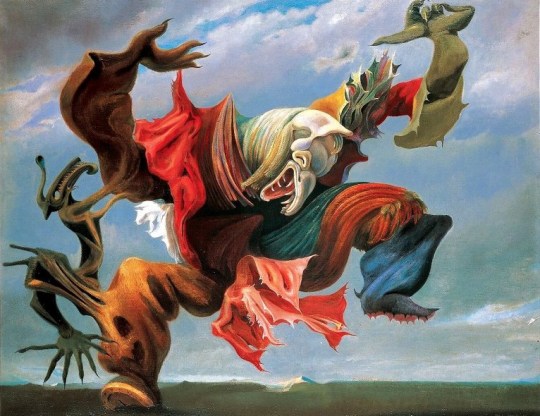
Due to the fighting style of some games, war and terror are also a common theme. Many games explore war, death and the primal urge to battle and survive. While some games take a more literal route like Call of Duty and depict actual battle, others take on a more surreal stance and like Ernst create strange and terrifying creatures to reflect and represent the real world. For example the Executioner card in Alice the Madness returns or in Ninja Theory’s reboot of the classic Devil May Cry series, you fight a demon that has taken over a news station that I think bears a resemblance to a portrait by Salvador Dali.

Surrealism was about making an unnerving illogical sense of the human subconscious. Dali in particular had a lot of work trying to depict dreams often alluding to childhood, sex, fear and death. Which again correspond with many themes in games. Horror games such as Silent Hill use strange desolate landscapes and horrid creatures to reflect the protagonists descent into madness. Silent Hill takes a lot of inspiration I believe from Nietzsche’s quote of “He who fights with monsters should be careful lest he thereby become a monster. And if thou gaze long into an abyss, the abyss will also gaze into thee”. As it follows various characters as they are stuck in the Nightmare town forced to confront their literal demons.
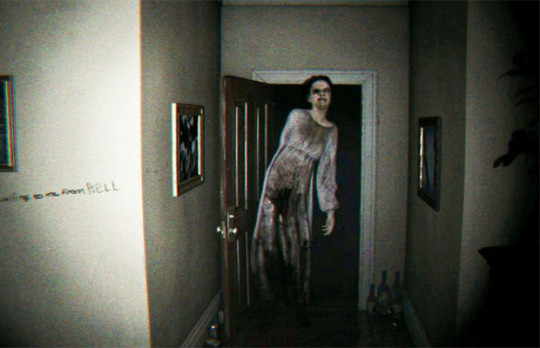
Ernst also created images of strange landscapes such as Europe After the Rain II. Here he paints a vast apocalypse. In the midst of the ruined land, a soldier threatens a female figure with his spear or ruined battle standard. It has been suggested that the figures could be large garden statuary, or perhaps semi-mythical survivors of a futuristic war. You can easily draw parallels between that description and many game narratives today like Fallout or Bioshock. It even looks a little like one of the landscapes
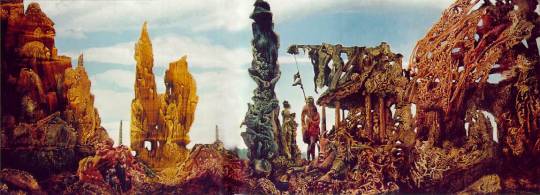

A common critique of surrealism and the gaming industry is that they are both male dominated movements. There are a lot of depictions of women within them, but most of the time they are hypersexualised. Just as surrealism was used to pry open deep psychological traumas and violence, it also showed a primitive need for sex and women. Either depicted in motherly roles such as Magritte’s ‘The Great War’ or simply an object of desire like in Dali’s ‘Bleeding Roses’.

The same can be said for many games where a female characters job is simply to be a helpless love interest only good for a sex scene or two.

Often scantily dressed and there purely for male enjoyment. However just as Frida Kahlo still rose to be a prominent surrealist figure without prior art education, many female characters are being developed giving girls a voice and an outlet not seen as much in old art movements. Portraits are finally being painted of women that are more than just the male gaze.
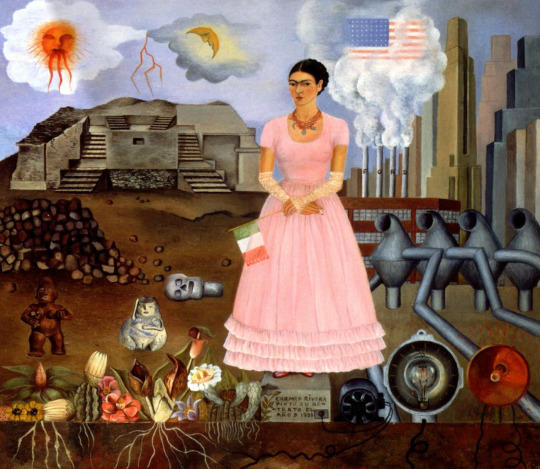
They are giving stories that tell a profound experience to be had in a game to female characters, to be seen through a female lense. Games such as Mirrors Edge, Tomb Raider, Dragon Age and Final Fantasy.
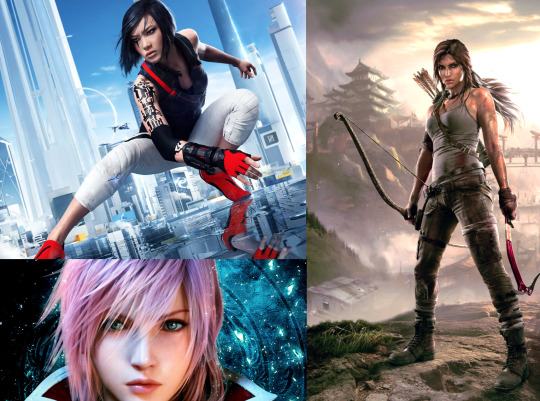
I guess the point of this essay was not to try and depict games as surrealist works despite a lot of the time having insanely surrealist qualities. It was to show a direct parallel being how an art movement has tried to portray human psychology using unconscious expression and absurd character and landscape design with an emerging genre of video game doing almost the exact same thing but with a lot more deliberate finish. But even so Sigmund Freud dismisses surrealism saying it was not an unconscious artistic endeavour but a very conscious liberation of highly structured ego activity. So both games and surrealism are very well thought out methods of experiencing the human condition.
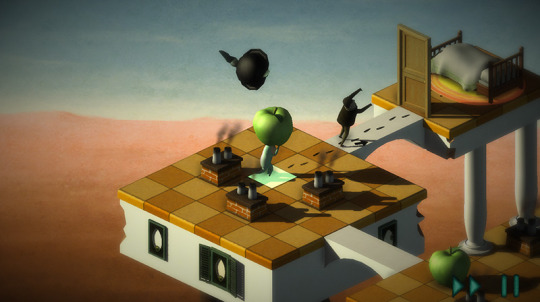
Overall I believe if the surrealists had the technology some very intense games would have appeared dragging the player into a twisted world to experience a vast dreamscape in a theatre of cruelty.
1 note
·
View note